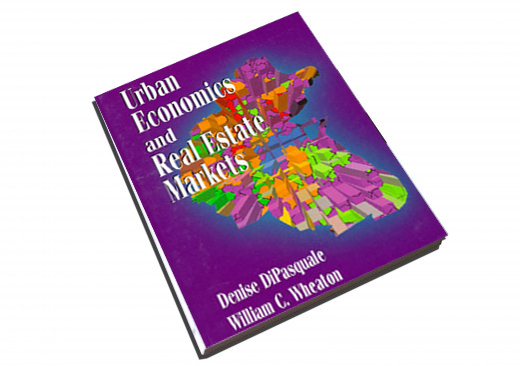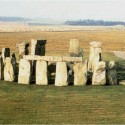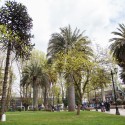Publicación de la semana: Urban Economics and Real Estate Markets

Urban Economics and Real Estate Markets
Autores: Denise DiPasquale and William C. Wheaton
Idioma: Inglés
ISBN-10: 0132252449, ISBN-13: 978-0132252447
Año: 1995
Dónde Conseguirlo: en Amazon
Sobre el libro
El libro Urban Economics and Real Estate Markets, presenta una combinación entre teoría económica y aplicaciones de bienes raíces, ofreciendo a los lectores las herramientas y técnicas necesarias para comprender el funcionamiento de los mercados urbanos de bienes raíces. En él se examinan los mercados de bienes raíces residenciales y no residenciales desde la perspectiva de la micro y macroeconomía, así como también el papel del gobierno en este tipo de mercados.
Índice:
I. INTRODUCTION TO REAL ESTATE MARKETS.
1. The Property and Capital Markets.
2. The Operation of Property Markets: A Micro and Macro Approach.
II. MICROECONOMIC ANALYSIS OF PROPERTY MARKETS.
– Residential Real Estate.
3. The Urban Land Market: Rents and Prices.
4. The Urban Housing Market: Structural Attributes and Density.
– Non-Residential Property Markets.
5. Firm Site Selection, Employment Decentralization and Multi-Centered Cities.
6. Retail Location and Market Competition.
III. MACROECONOMIC ANALYSIS OF PROPERTY MARKETS.
7. Economic Growth and Metropolitan Real Estate Markets.
– Residential Real Estate.
8. The Market for Housing Units: Households, Prices, and Financing.
9. The Market for Housing Services: Moving, Sales and Vacancy.
10. The Cyclical Behavior of Metropolitan Housing Markets.
-Nonresidential Property Markets.
11. The Operation of Non-Residential Property Markets.
12. Econometric Analysis of Metropolitan Office and Industrial Markets.
IV. THE IMPACT OF LOCAL GOVERNMENTS ON REAL ESTATE MARKETS.
13. Local Governments, Property Taxes and Real Estate Markets.
14. Public Goods, Externalities and Development Regulation.
Extracto:
“What is real estate? How big is the real estate sector? How does the market for the use of real estate differ from the market for the real estate assets? (…) The most common definition of real estate is the national stock of buildings, the land on which they are built, and all vacant land. These buildings are used either by firms, government, nonprofit organizations, and son on, as workplaces, or by households as places of residence. When defined this way, the value of all real estate makes up the largest single component of national wealth”
“¿Qué son los bienes raíces? ¿Qué tan grande es el sector inmobiliario? ¿Cómo difiere el mercado para el uso de los bienes raíces, de los mercado de activos de bienes raíces? (…) La definición más común de bienes raíces es el stock nacional de los edificios, los terrenos en los que están construidos, y todas las tierras ociosas. Estos edificios son utilizados por empresas, gobierno, organizaciones sin fines de lucro (…)Cuando se define de esta manera, el valor de los bienes raíces constituye el mayor componente de la riqueza nacional “









